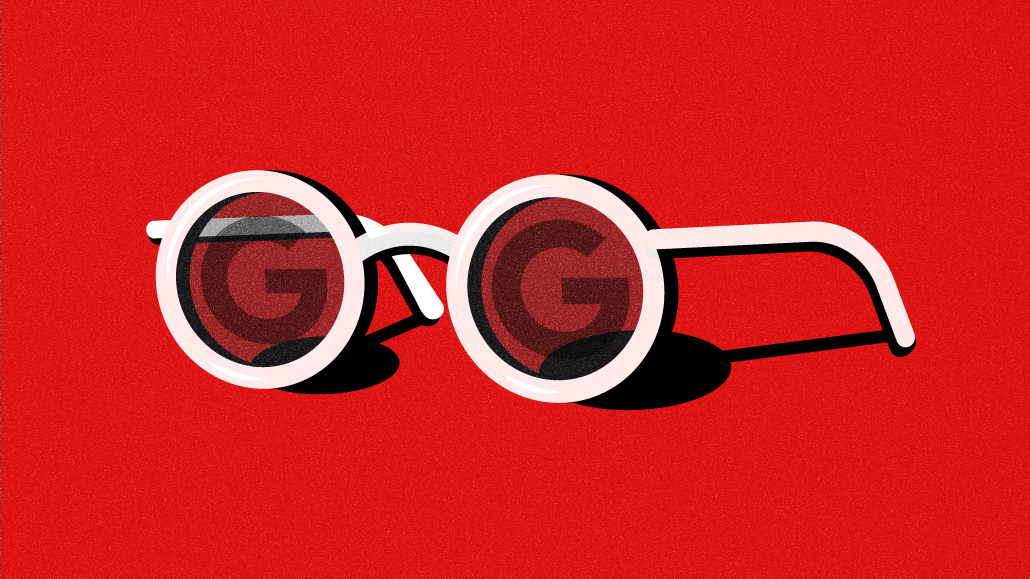Insights from CTV leaders at Dentsu, Horizon Media and more

This week, Google is hosting its annual event called Cloud Next, a three-day conference in Las Vegas during which the tech giant showcases all sorts of new cloud-related capabilities. It comes as a surprise to no one that plenty of the latest tools are powered by AI.
During Google’s keynote presentation on Tuesday, the company announced numerous updates for everything from its AI models and new chips, to new platforms for creating and editing content. And while marketing wasn’t the main focus of the 90-minute presentation, plenty of updates are of interest to the marketing and media worlds.
Beyond all the new AI updates, Google highlighted how companies across a range of industries are already using its various AI products. For example, one short video features Mercedes-Benz CEO Ola Kallenius, who said the auto maker is applying Google Cloud AI for sales assistants, improving call centers and optimizing marketing. Other companies with executives featured in brief video appearances included Uber, Walmart and Goldman Sachs.
Here’s a recap of some of the themes from the day one keynote of this year’s Cloud Next event:
Can AI deliver the holy grail of personalization?
Personalization was one of several AI opportunities mentioned during Cloud Next, featuring several updates and use cases. For example, Google mentioned French retail giant Carrefour is using Vertex AI to develop campaigns for targeted product marketing. It also mentioned Canva, which is using Vertex AI to power its AI design tools. Yet another is P&G, which is developing photorealistic images and creative assets. Google also announced a new partnership with WPP, which is using Vertex AI for a media activation tool called Open Media Studio. One one of the early adopters of Open Media Studio is Google itself.
“Advertisers, like the Google Pixel team, can now see predictions of which ads are going to work the best before a single impression has been served, avoiding millions of dollars of media waste over the life of campaigns,” Aparna Pappu, vice president and general manager of Google Workspace, said on stage during the keynote.
AI models, context windows and updates beyond ads
While there weren’t many new AI features for advertising-specific platforms, Google Cloud Next had plenty of updates for AI models that could improve the ways companies approach marketing and other parts of business. Updates for Google’s Gemini’s 1.5 Pro model offered ways for the AI to hear and see images and read text. Google also announced a noteable expansion of its context window, which will allow companies to insert longer videos, audio files and more words when developing prompts.
While there weren’t any ad-related updates to Google Search, the company announced new enterprise tools for using Google Search to improve the accuracy of AI models. Using a technique called retrieval augmented generation (RAG), Google will let companies ground Gemini’s responses with Google Search, which Google said reduces the likelihood of hallucinations and other inaccuracies.
According to Gartner analyst Andrew Frank, having a larger context window will help with AI application such as brand-training through uploading hundreds or thousands of images. He said the bigger context window could also make fine-tuning AI models easier.
That said, even if Google Search helps improve accuracy of LLMs, Frank said there are questions about how it’ll all work in practice.
“There’s still a missing piece for me, at least, which is how you translate these gigantic prompts into some form of search,” Frank said. “How do you extract an effective search prompt from a generative AI prompt so you can combine them in a way that makes sense? How do you calibrate that to know you don’t get too little or too much?”
Here comes more AI content
Google also announced new features for using AI to create and edit content. For example, it unveiled a new AI video creation app called Google Vids, which lives in Google Workspace alongside apps like Google Docs and Google Sheets. Another AI platform called Imagen allows for AI-generated images using text-to-image prompts for product images, ads, GIFs and storyboards.
Along with new content creation tools, Google also announced general availability of its digital watermarking for AI-generated images that are created by Imagine, which will be powered by Google’s SynthID. However, AI and misinformation experts have pointed out that AI water-marketing and other popular misinformation-mitigation tactics only helps so much.
Introducing more AI agents
Google is also debuted new AI agents for a range of tasks like finding and analyzing information, helping a shopper find the right item to buy, and numerous other capabilities for various industries. (It’s worth noting that AI are also part of other companies’ AI strategies too such as Microsoft, which has been building out its suite of AI copilots.)
One agent, called Creative Agent, helps marketers teams create and personalize content with generative AI across design and production teams. Other features for Creative Agent include ways to brainstorm, storyboard, develop social media content and even create a podcast with AI-generated scripts and voices.
More in Media

Ad Tech Briefing: The ‘plumbers’ posing as the unlikely saviors of the internet
After several false dawns, can Cloudflare’s ‘anti-AI scraping tool’ finally offer publishers a road to commercial redemption?

Generative AI, not ad tech, is the new antitrust battleground for Google
Global regulatory scrutiny is shifting from Google’s ad tech and search dominance to generative AI, as they aim to address the most pressing threats to publisher business models.

Yahoo takes cues from platforms as it offers more editorial control to creators
Through its creator program, Yahoo is evolving from its roots as a content aggregator and editorial publisher to more of a distribution platform for individual creators.





